| Homepage | Timeline | Maps | A-Z index | Learning |
Burial customs: cartonnages
|
Cartonnage is the term used in Egyptology and Papyrology for plastered layers of fibre or papyrus, flexible enough for moulding while wet against the irregular surfaces of the body; the method was used in funerary workshops to produce cases, masks or panels to cover all or part of the mummified and wrapped body. The plastered surface gave an even ground for painting motifs with greater stability than was possible with a linen shroud. Sometimes cartonnage is compared with papier mache, but there is no pulping of the substrate, whether papyrus or linen: instead, smaller or larger sections of linen are cut to shape, and layered, and the plaster applied over the top. The method of preparation preserves the sections, and for this reason papyrus cartonnage is a prominent source of well-preserved manuscript sections. There are four principal periods of use of cartonnage, each with distinct ingredients and effects:
|
two pieces of cartonnages of the 22nd Dynasty
(click on the images to see a larger picture)
 |
 |
Cartonnage pieces of the Ptolemaic or Roman Period, some
of them might belong to mummy masks.
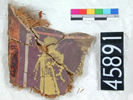 |
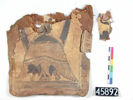 |
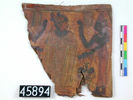 |
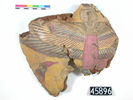 |
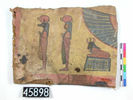 |
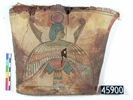 |
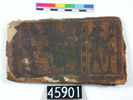 |
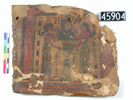 |
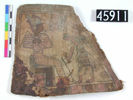 |
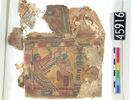 |
 |
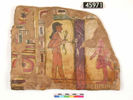 |
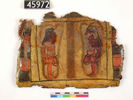 |
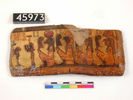 |
compare: